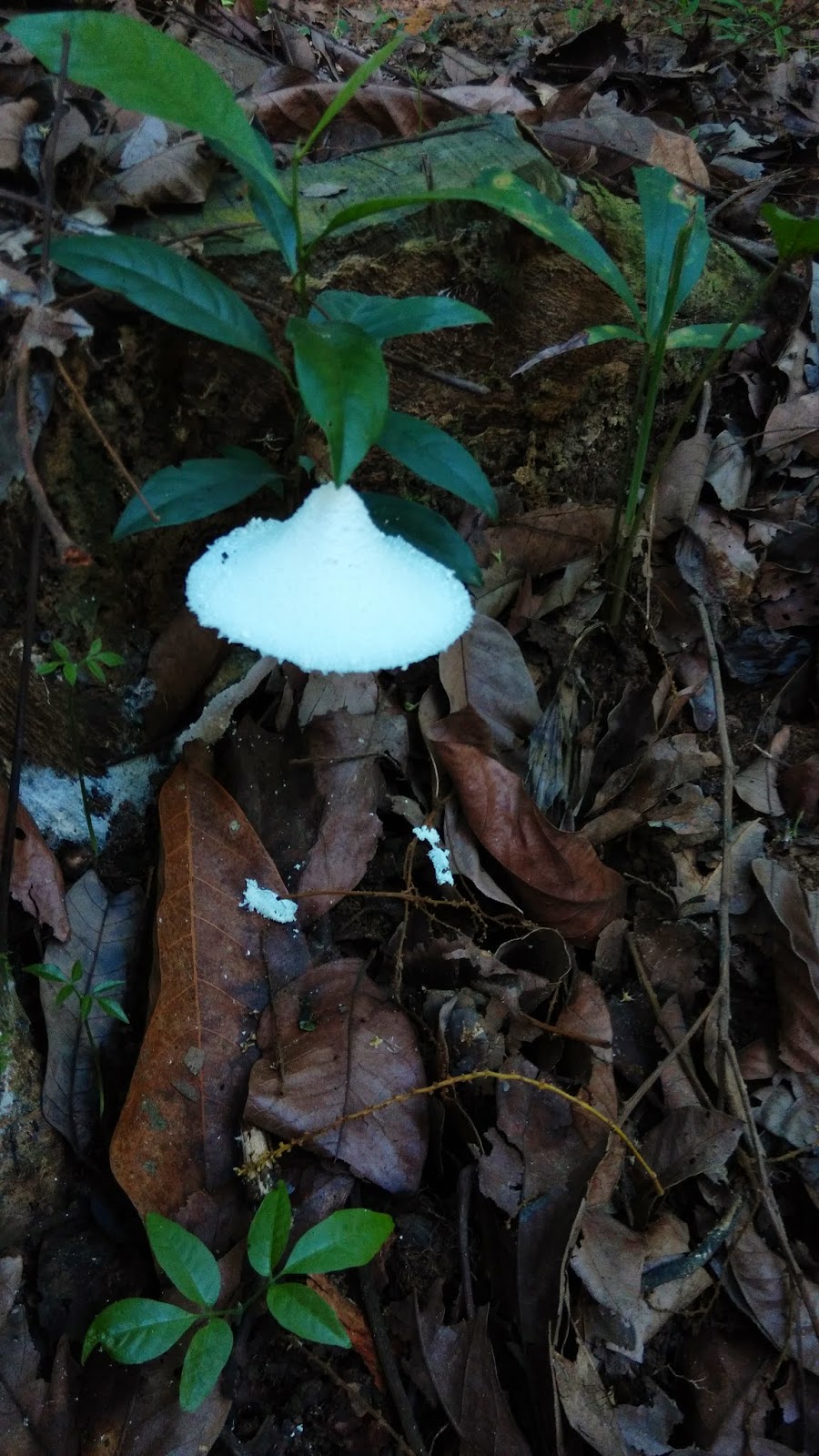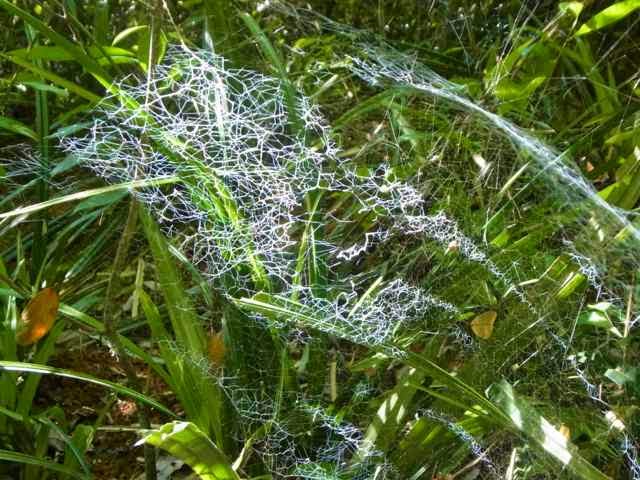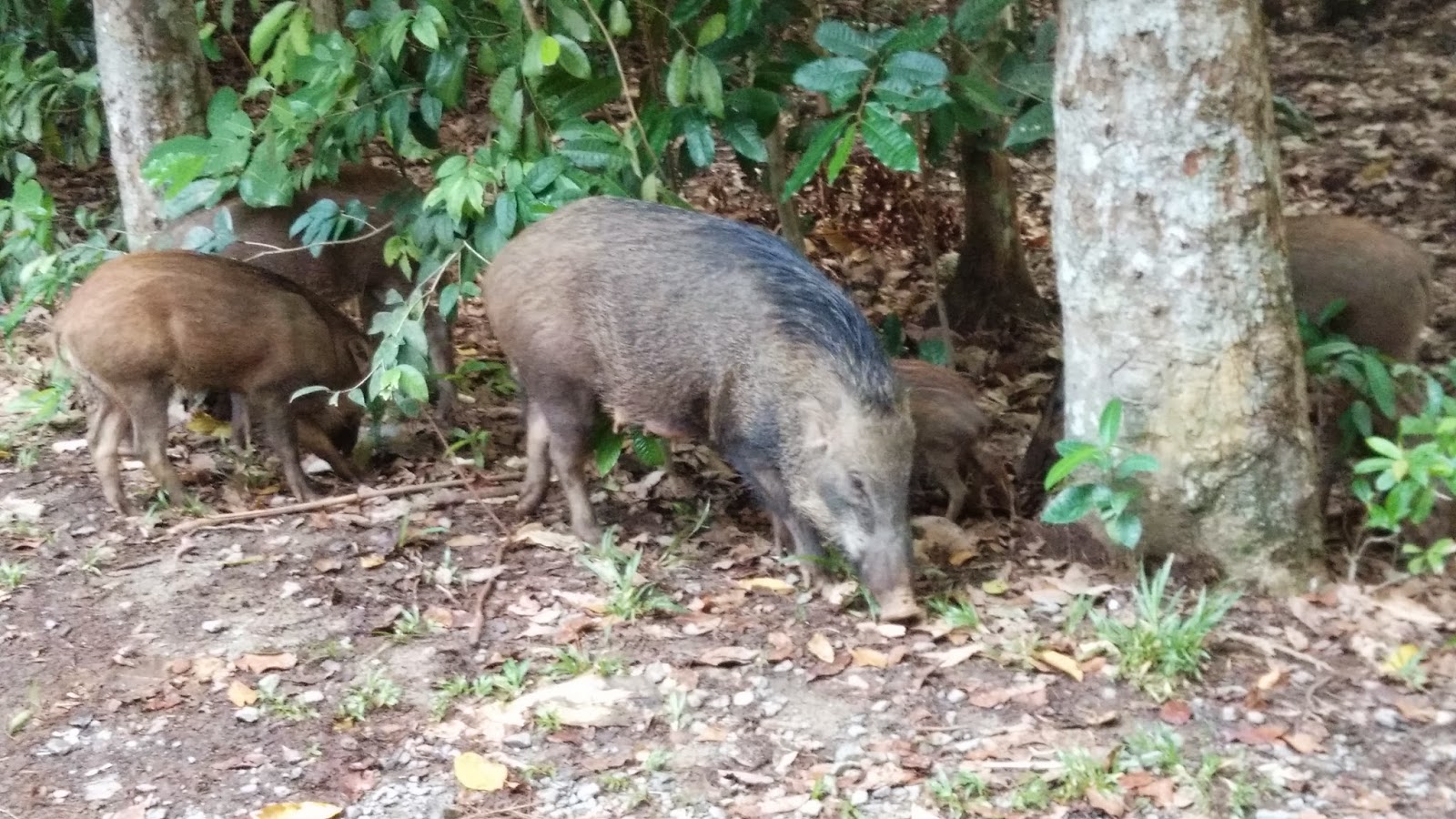Before we headed off, someone spotted a Tropical Swallowtail moth (Lyssa zampa) in a tree! It is the second largest moth in Singapore after the Atlas moth! I did not get a good look at it, but here is another one at Chek Jawa I found a few days ago. More and more people have been spotting this moth around Singapore, and it is believed that they are experiencing a mass emergence this year! Do submit your records if you see one!
Along the coastal forest trail, a keen eyed visitor spotted this blooming fungus (left) growing out of a rotting log! On the right was what it looked like three days ago. I wonder if it is some kind of bioluminescent fungi (Mycena sp.) that glows in the dark?
The Malva nut (Scaphium macropodum) was in full bloom that day! Also known as the Cheng Tng tree, its seeds can be soaked in water to form a brown spongy jelly that is added to the local dessert!
Ley Kun's group spotted a Grey heron (Ardea cinera) perched on the railings that then flew into the water! It is one of the largest bird in Singapore, standing at 1 m tall with a wingspan of up to 2 m. The mudflats and mangroves at Chek Jawa provide a rich food source for these birds, which hunt for fish, crabs and insects.
On the mudflats, the visitors were mesmerised by the waving fiddler crabs and mudskippers skipping across the mud! The male fiddler crabs have one large claw, which they use to attract females to mate. The larger the claw, the 'sexier' the males appear to the females!
There was a praying mantis beside the boardwalk. It kindly remained motionless for us to take photos! Being ambush predators, it was likely waiting for a tasty meal to pass by!
In the mangroves, we observed large mounds made by the elusive mud lobster. They are important homes for many mangroves animals, such as the tree climbing crab, which dig burrows and hide in them!
Next to the Jejawi tower, my group noticed a Mangrove onch slug stuck on a tree trunk. It was probably grazing on the lichen!
There was also this beautiful Mangrove Dwarf dragonfly perched on a branch tip. It is an uncommon species, so I guess we were quite lucky!
The Sendudok (Melastoma malabathricum) in full bloom greeted us as we came down the steps of the Jejawi tower. The purple flowers open after sunrise and lasts for just a day!
Another visitor spotted a Green-crested lizard (Bronchocela cristatela) perched on a tree branch. It is a native species, found in our undisturbed forests. Sadly, the alien Changeable lizard has largely displaced this species from urban parks and roadsides, thus they are not as common as they once were.
Ley Kun's group discovered this interesting web. I wonder what spider wove it in such a pattern?
On our way back to the Info Kiosk, we saw this Golden orb spider (Nephila pilipes) devouring a moth! Did you notice the tiny male spider at the edge of the web? He may be looking for an opportunity to fertilize the female, and that would be the best time as she was busy feeding!
As mentioned on our last Chek Jawa visit, durian season is fast approaching, and this half-eaten durian fruit was likely the handiwork of the resident wild boars! Notice how the ground around the fruit was disturbed by their shovelling action.
The visitors really enjoyed themselves on our walk! This group of friends from Chay Hoon's group was all smiles!
Pei Yan's group from Nikam Yoga did an amazing drawing of everyone in their group! One of the most enthusiastic and fun groups we have had in a while!
The kids delighted us with their creative and colourful drawings. I especially liked this one, which references the legend of how Pulau Ubin came to be. Can you spot the frog, pig and elephant?
From the drawings, we can tell the kids and adults really understand and appreciate the importance of the habitats at Chek Jawa to animals and humans! We hope to see you again at Chek Jawa someday, and yes, bring your children next time!
Thank you Ley Kun, Ria, Chay Hoon and Pei Yan for coming down and volunteering your time and expertise! We had a blast exploring Chek Jawa and I am sure the participants felt the same way!






















.jpg)





No comments:
Post a Comment